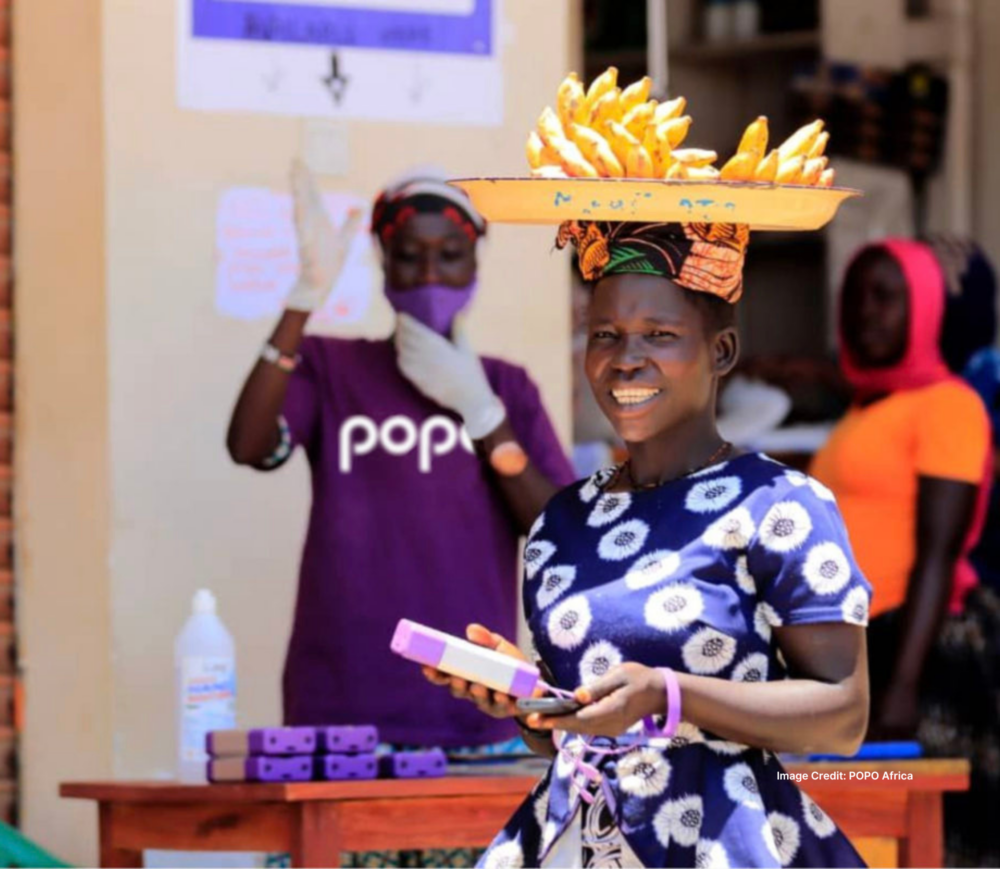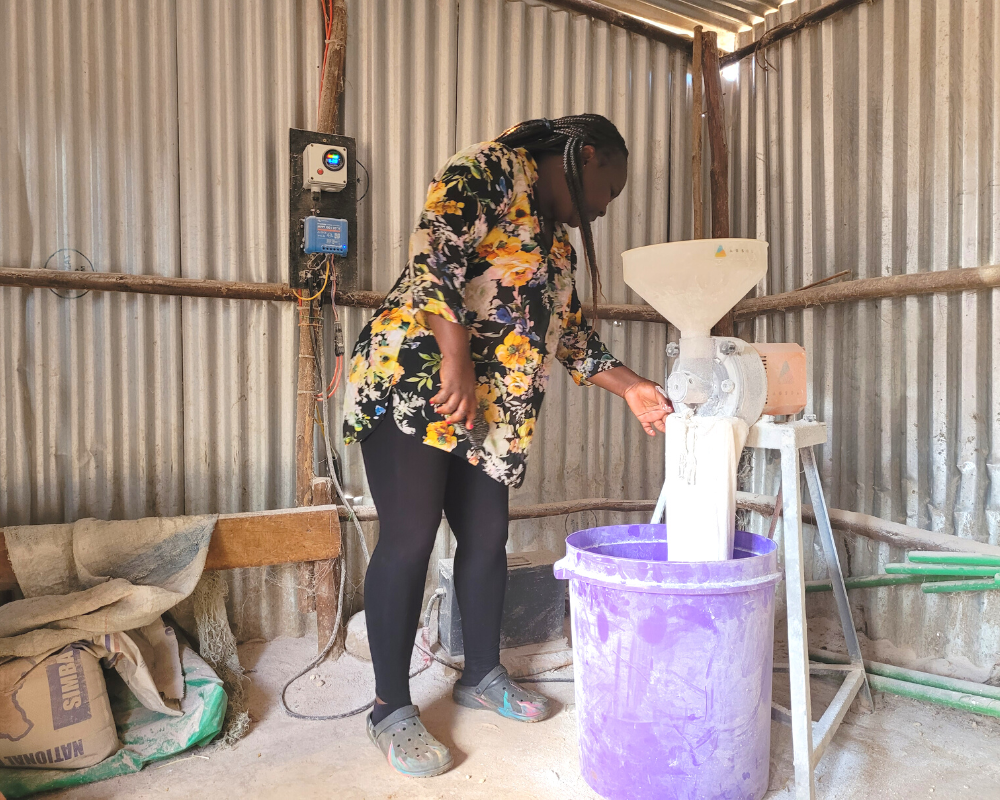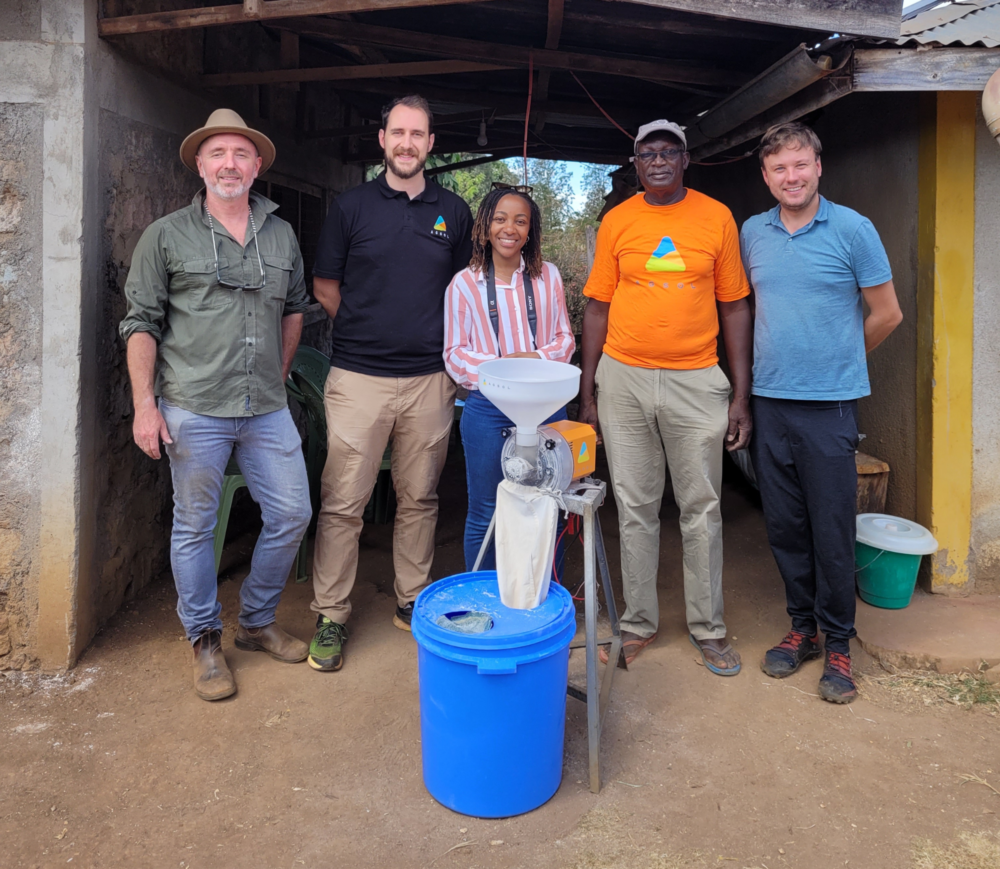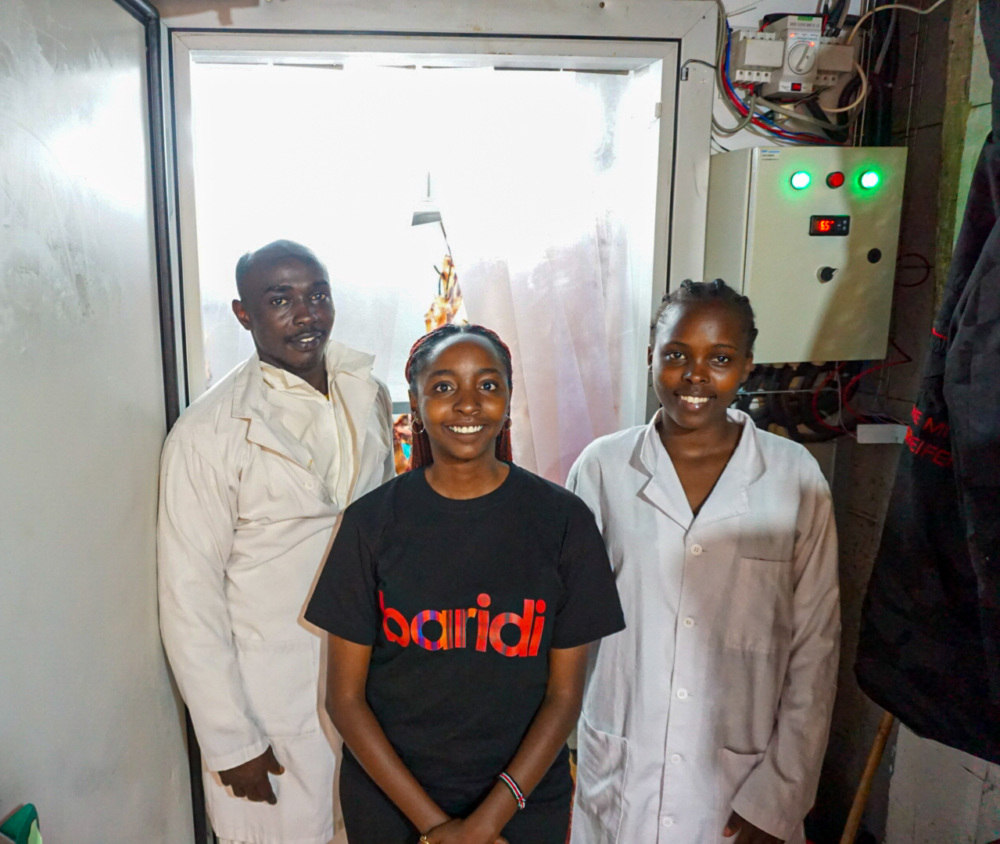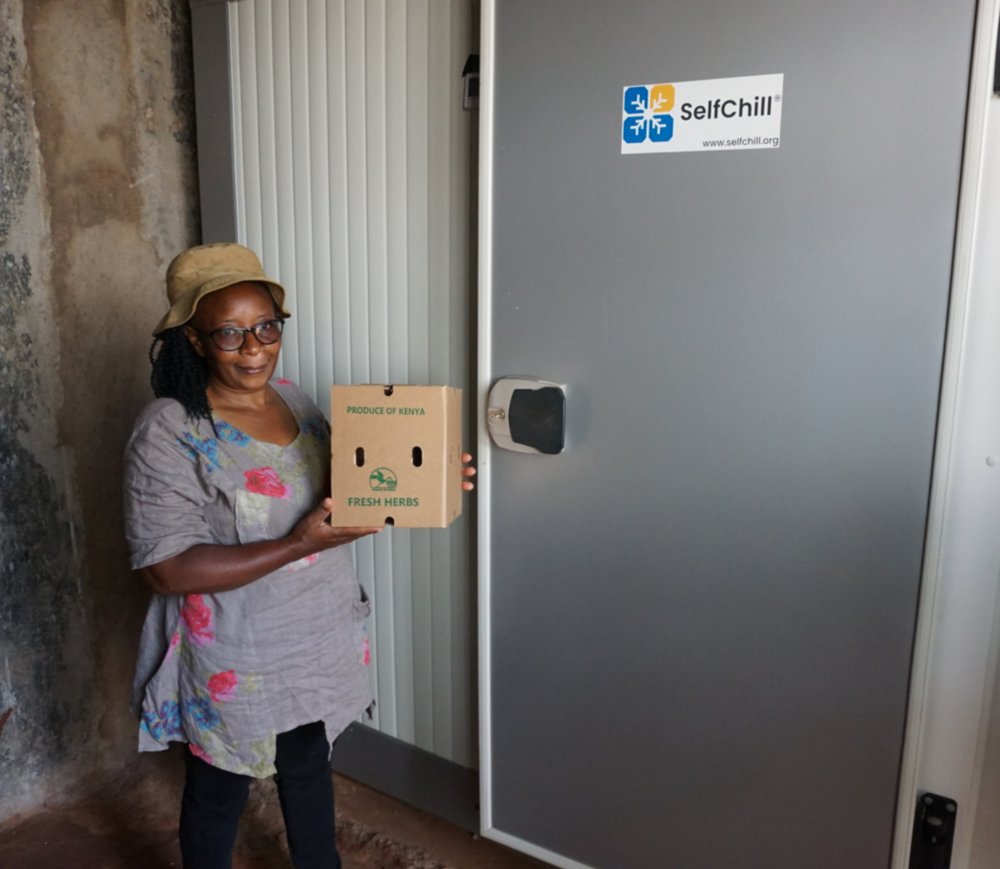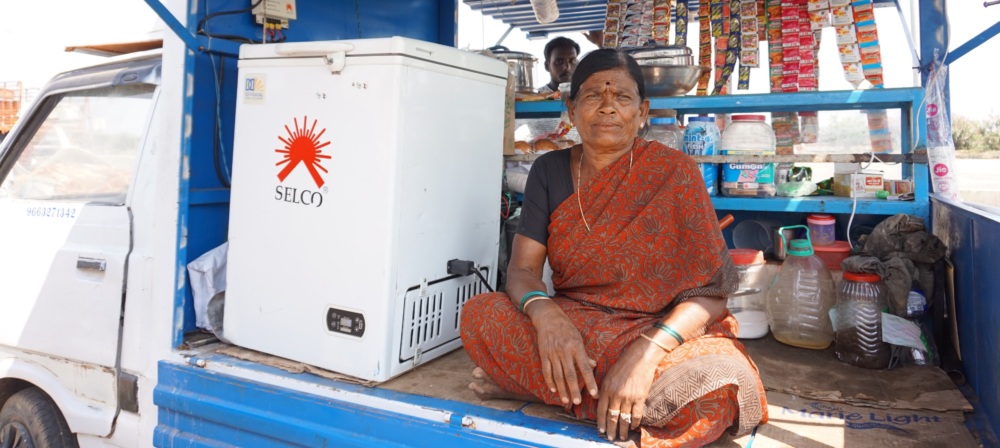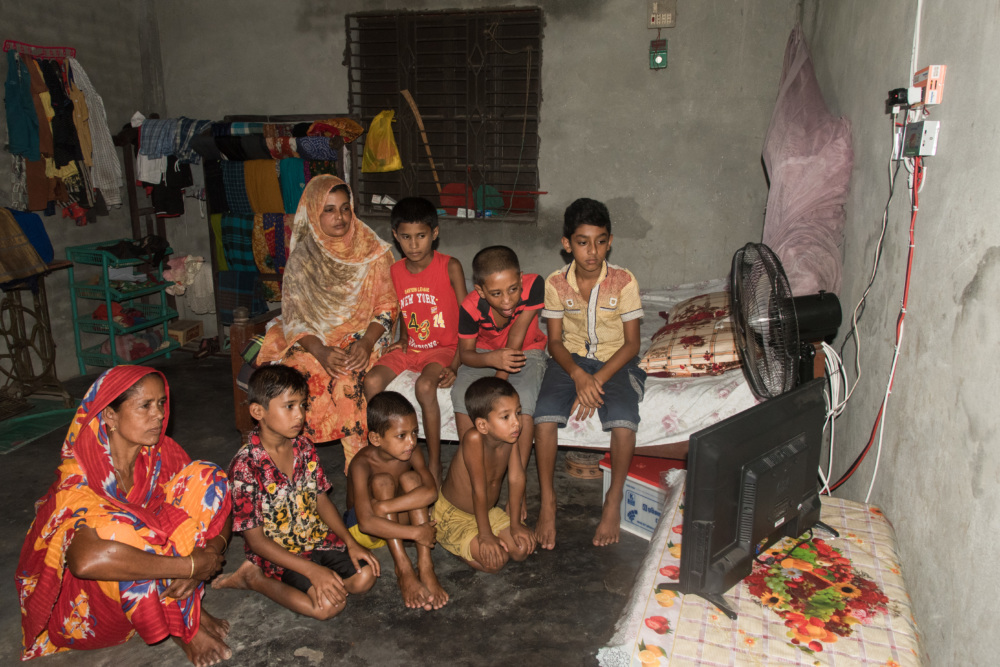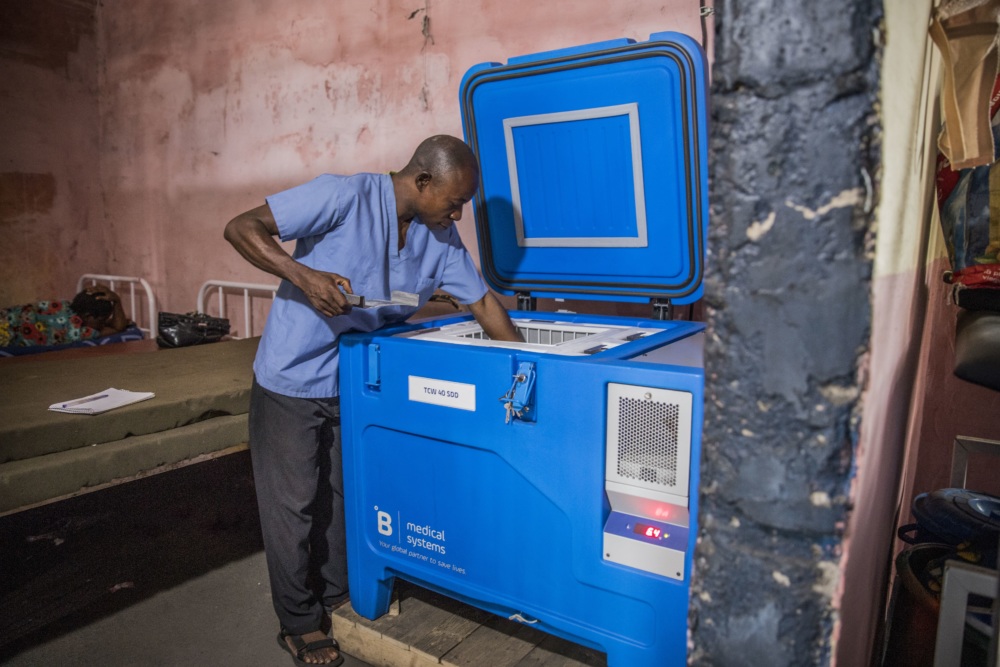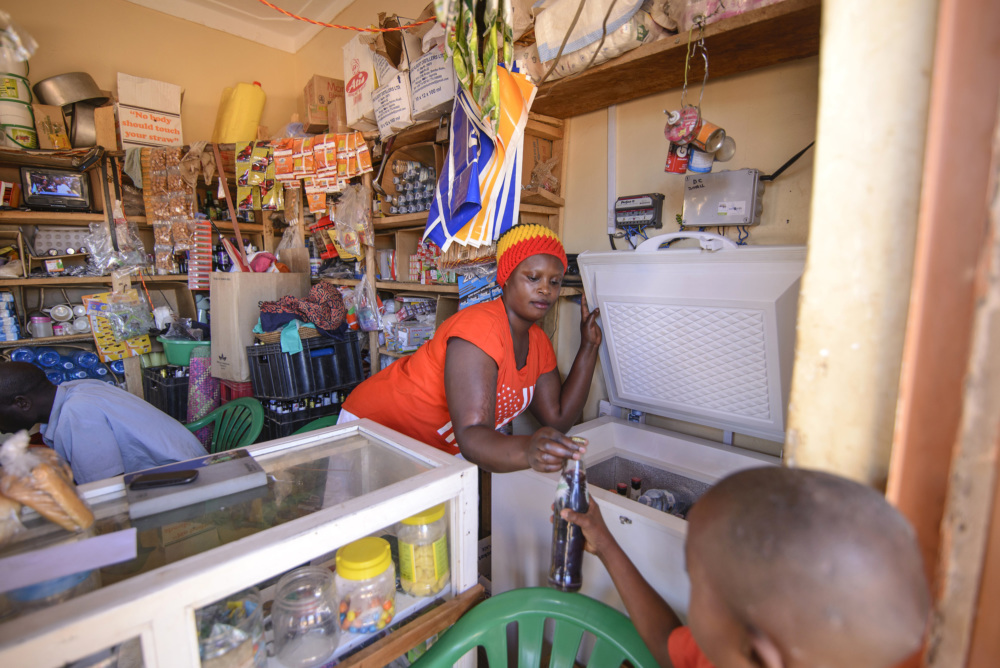CLASP in the Field: Seeing First-Hand How Solar-Water Pumps Are Improving Livelihoods in Kenya
CLASP is managing the ongoing Efficiency for Access consumer awareness campaign through February 2022. The campaign aims to catalyze the adoption of solar water pumping through awareness creation and linkage with market players.
On November 19, 2021, Efficiency for Access team members went out into the field to witness some of the ongoing activities of our solar water pump consumer awareness-raising campaign in Machakos county, Kenya. During this visit, they met Samuel Ndutu, a farmer from the Mwala sub-county, who relies on solar water pumping to irrigate his farm.
Samuel is a widowed father of two who left formal employment a few years back and now relies on farming to provide for his family’s needs, such as his sons’ education. On his farm, Samuel grows various vegetables and fruits, including tomatoes, cabbages, kales, bananas, pawpaws, eggplants, and more. These crops go through different growth cycles, requiring different levels of care and intervention, as well as need varying amounts of water to produce high and healthy yields. For example, tomatoes and cabbages require frequent watering, which is a scarce resource in the hot and dry Machakos county.
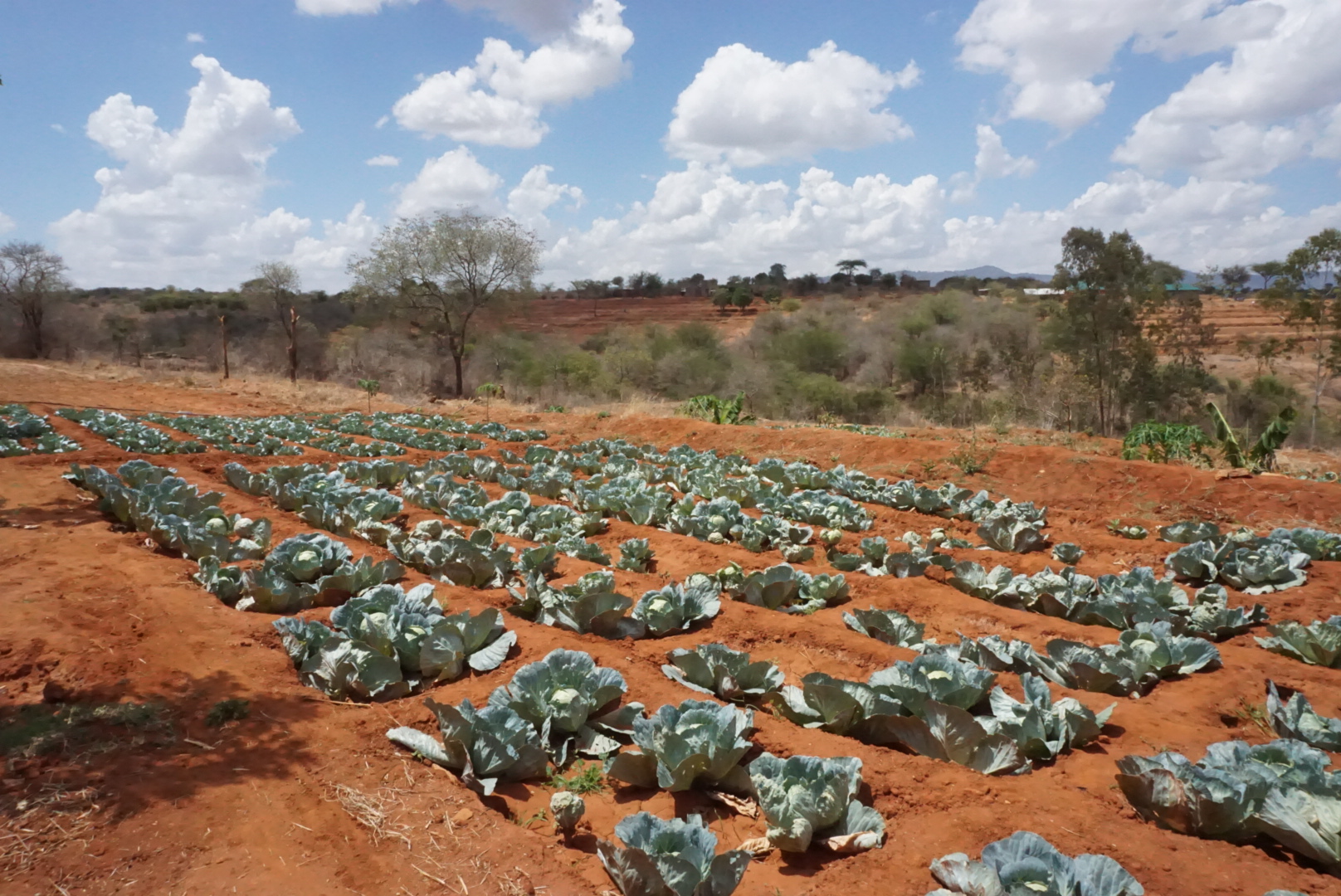
Section of Samuel’s farm where he has planted cabbage
Samuel’s farm is approximately half a kilometre away from the nearest water pan (a pond for storing rainwater), which he and surrounding households rely on as a water source for their livestock and crop farming. After weeks of research on online farming forums, looking for an effective and affordable means of getting the water to his farm, Samuel came across a neighbour who had shared her experience using a solar water pump on her farm. He got in touch with her and learned more about the pump’s performance, its purchase process, and how it had impacted her farming output. Satisfied with this information, Samuel contacted a local pump supplier and purchased a submersible solar water pump kit with a battery. By the time of the field visit, he had been using the pump for six months and was pleased with its performance, not having experienced any breakdowns so far. He was particularly impressed by the pump successfully pumping water uphill across a distance of over 400 meters. Aside from pumping water, he also uses the solar home system the pump came with for lighting and charging small household appliances like mobile phones.
“The pump has met the expectations I had, especially considering the distance and elevation of my farm. I have had no issues so far,” says Samuel. He further appreciated the freed-up time to attend to other tasks while water is pumped into his tank automatically. Before the purchase, he would fetch water himself—a time-consuming task.
Samuel explained that he typically pumps between 7,000- 8,000 litres over eight to nine hours. He switches the pump on in the morning, lets it run till lunchtime, empties the storage tank by watering his crops and then re-fills the tank. Samuel only pumps once a week during humid periods, but when it is drier, he pumps twice weekly. He mentioned an interest in purchasing a second pump, preferably a more powerful model than his current one, since he is keen to expand his farm to increase yields and, therefore, his income.
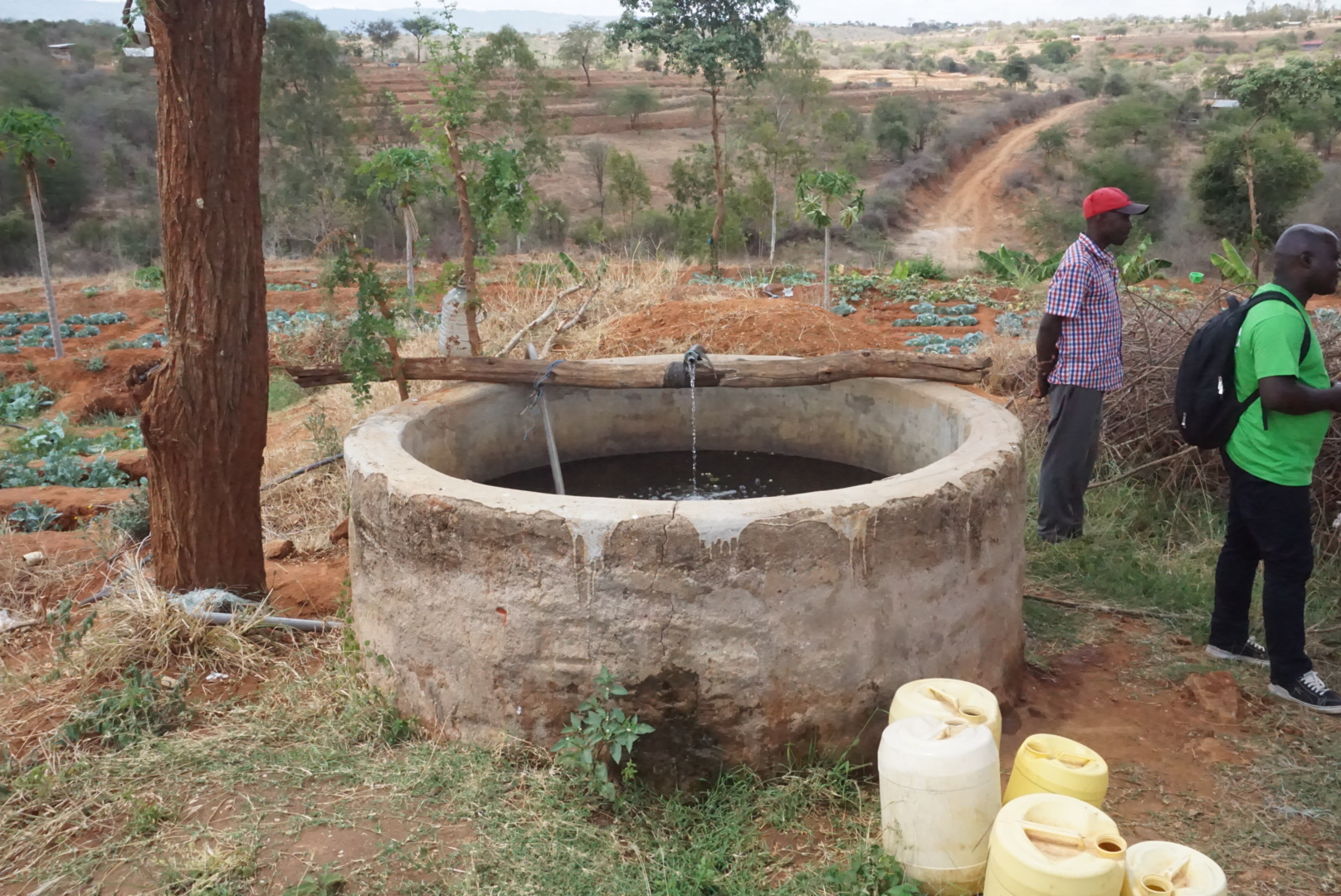
Storage tank on Samuel’s farm which stores the water he pumps
In addition to the pump performing as advertised, Samuel liked that he was not incurring ongoing costs to get water to his farm. If he had a fuel-powered pump, it would cost him about 5-8 USD per use. Additionally, he appreciated the convenience of the “pay as you go” product-financing model he used as an alternative to having to part with a prohibitive upfront payment. Samuel is also satisfied with the after-sales support offered by the manufacturer. The company’s engineer installed the pump at no extra cost, and after that, whenever he has had an inquiry, all he has had to do is get in touch with the manufacturer’s support team on the phone for assistance.

Samuel holding his submersible pump
Samuel is considered an influencer farmer in the area, and neighbours come to him to learn about farming with a solar water pump. Visiting his farm and seeing how using the solar water pump has boosted his farming productivity was a great reminder that efficient, solar-powered appliances improve and support the livelihoods of off-grid communities and households sustainably.
As CLASP continues to manage the Efficiency for Access consumer awareness campaign through February 2022, we look forward to uncovering more insights from the end-users like Samuel. To learn more about the campaign, follow us on Twitter or email us via info@efficiencyforaccess.org.

